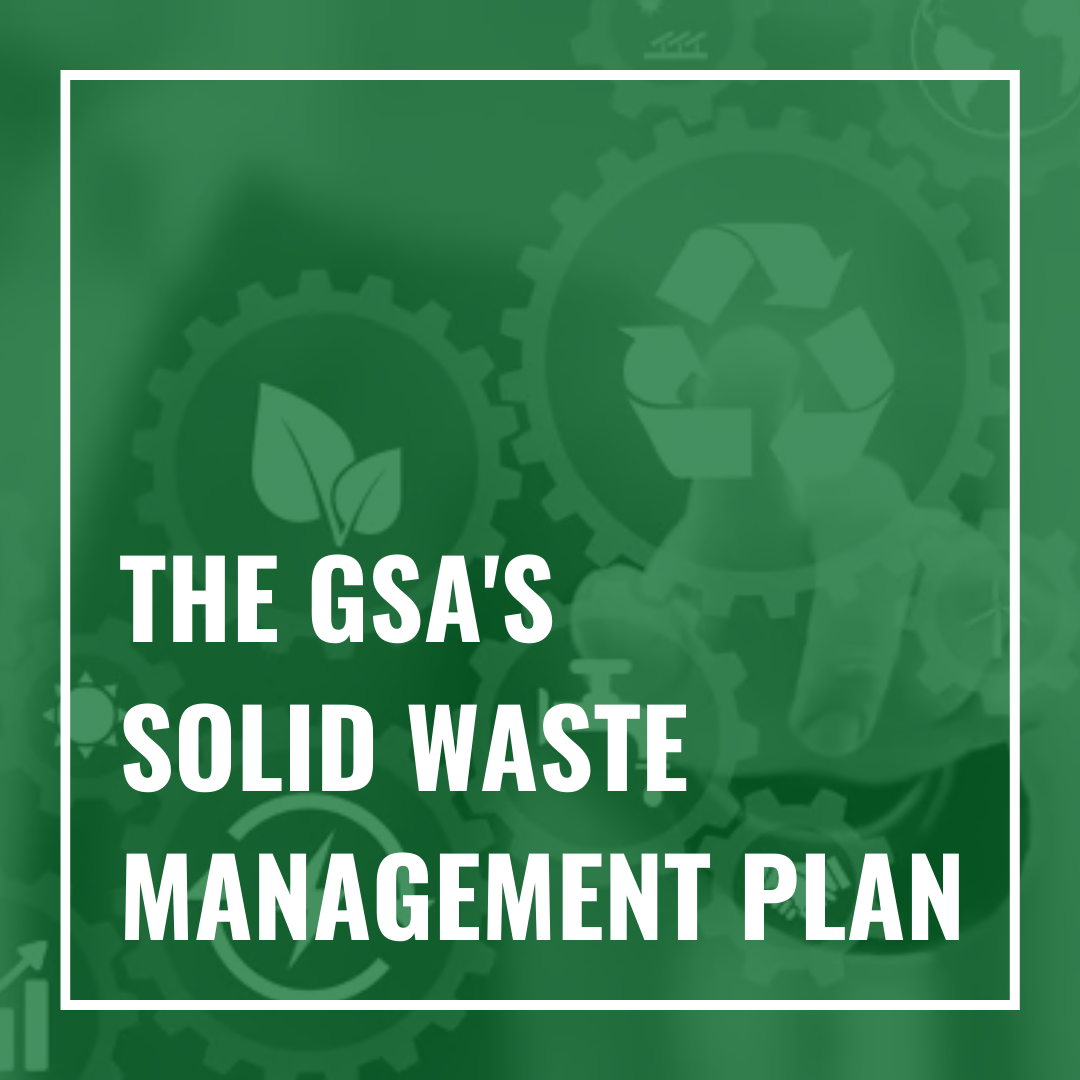We use cookies to make your experience better. To comply with the new e-Privacy directive, we need to ask for your consent to set the cookies. Learn more.
The GSA's Solid Waste Management Plan

The United States General Services Administration (GSA) coordinates federal agency workplaces and private-sector services, ensuring that U.S. government workers have access to everything from offices to supplies to waste-disposal contracts. This central role gives the GSA a unique power to shape waste-handling practices across the entire spectrum of federal bureaucracies (and, sometimes, those with whom they do business). Because it is itself a federal agency, though, the GSA’s priorities can change with the stroke of a President’s pen. That can lead to confusion for facilities managers in government and across the private sector, wherever contracts depend on adherence to GSA environmental goals. Here’s what facilities managers need to know about the GSA solid waste management plan, as it stands at the time of this writing:
Who Runs the GSA Solid Waste Management Program?
Within the United States, the GSA is organized into 11 different regions. (The Administration operates internationally, as well, but for the purposes of this discussion, we’ll limit our coverage to domestic operation.) Each of these regional offices operates an independent solid waste program on behalf of the region’s federal buildings. According to the GSA, these programs consist of “advising on sustainable, environmentally-compliant waste collection, storage, and disposal requirements.” So what exactly are these requirements? As we hinted above, they can shift with political priorities — and, in fact, they recently did.
Recent Changes to GSA Waste-Handling Protocols
Beginning in March 2015, the GSA’s waste management programs were governed by Executive Order 13693: Planning for Federal Sustainability in the Next Decade. This order asked federal government operations to cut greenhouse gas (GHG) emissions by 40 percent by 2025. E.O. 13693 also required federal agencies to track emissions reduction data throughout the decade. Disposing of solid waste in landfills is a significant driver of methane (a powerful greenhouse gas) production, and the GSA wrote its disposal recommendations based on limiting landfill use — in other words, diversion to recycling or composting centers However, in May 2018, the new presidential administration revoked EO 13693, replacing it with Executive Order 13834 Regarding Efficient Federal Operations. The new guidelines remove hard-number sustainability goals in favor of a requirement that federal agencies operate “in a manner that increases efficiency, optimizes performance, eliminates unnecessary use of resources, and protects the environment.” So what does that mean in practice? To answer that question, the President’s Council on Environmental Quality issued implementation instructions on EO 13834 in April 2019. This document provides the most comprehensive guide to enacting the new GSA rules on sustainability, include solid waste management. Access the Implementing Instructions for Executive Order 13834 Efficient Federal Operations here.
More GSA Resources for Sustainable Waste Management
The GSA does offer assistance to facilities managers who wish to move toward a more sustainable solid waste system. Like most GSA resources on sustainable facilities, this guidance can be found in the GSA Sustainable Facilities Tool (SFTool).Read the SFTool guide to sustainable waste management here. References: “Solid Waste Management.” GSA. U.S. General Services Administration, n.d. Web. 2 Jul. 2019. “Solid Waste System Overview.” SFTool. U.S. General Services Administration, n.d. 8 Jul. 2019.
